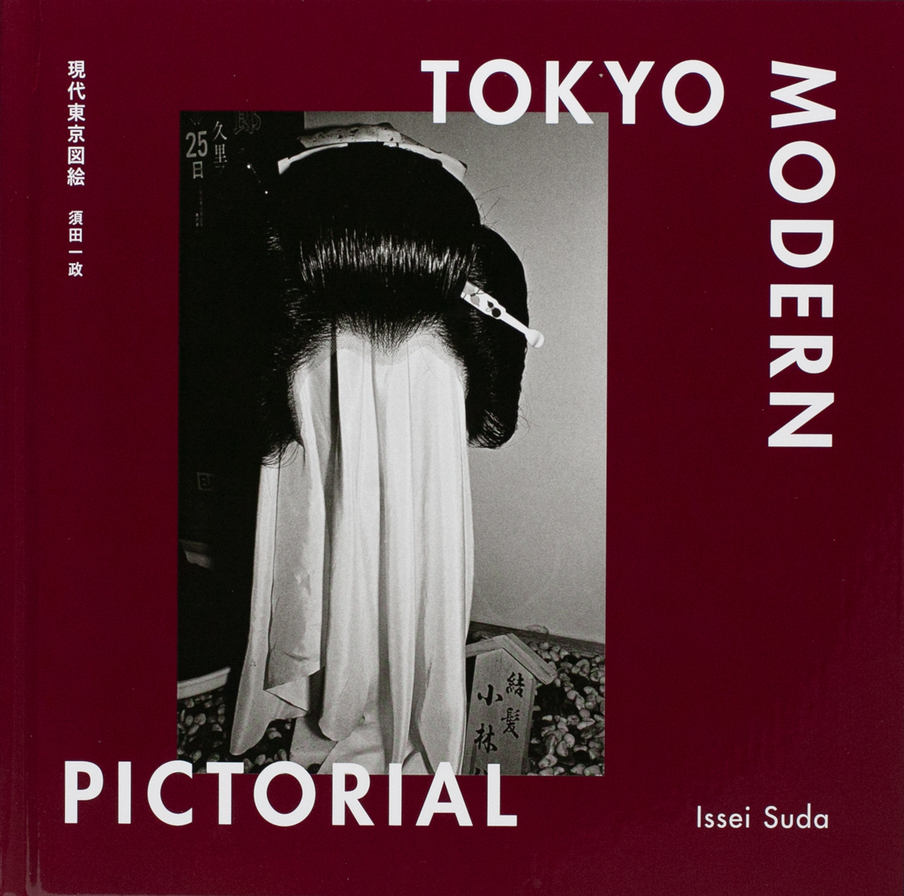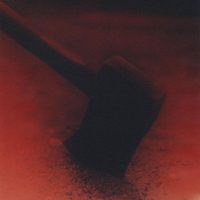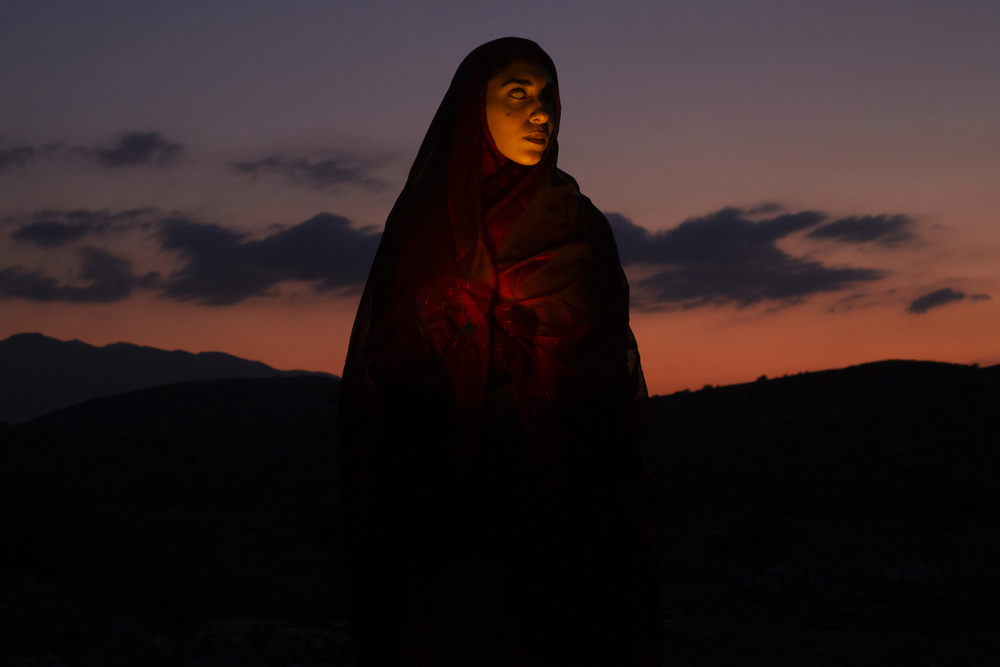Mark Pearson is a publisher and gallerist and the owner of Zen foto Gallery.
Episode 92: This episode was a great introductory for me to the world of contemporary Japanese photography books. Mark Pearson of Zen Foto Gallery walked me through just a small bit of his efforts. I had left Japanese photobooks as a field of study for some time as the economy of purchase and the high regard (or fetish) of the national output had always struck me as somewhat impenetrable. That is not to suggest that it is not ultimately rewarding, but in simple speak, that I could not afford to begin that particular trip, economically. There are loads of great Japanese photobooks out there and many command quite high prices. It is a shame that though appreciated, the West seems to get stuck on considering Moriyama, Araki, Tomatsu, Fukase, Kawada and just a few others when the potential field of discovery is really large and quite eclectic.
In searching out Japanese books, I found Mark through a recommendation from Chris Shaw, a noted British artist who has also published with Zen Foto Gallery. His excellent books The Hunter Gets Captured By The Game and Tokyo in Hong Kong are just two of the excellent titles Mark has published. Whereas Chris is not Japanese, Mark also publishes books from other countries such as China and South Korea. Chris’s suggestion led me down the rabbit hole with Zen Foto titles and I was fortunate enough to receive a package from Mark with a few of the titles listed below.
What strikes me as exceptional about Mark is that though he operates a successful publishing house and gallery, he also runs the Hong Kong Photobook Fair and is a partner with Shashasha, a photbook outlet that of course, features many of the Zen Foto titles. That being said, it is not his main job at all. He happens to work in the business sector and is stationed in Hong Kong presently. We speak about these endeavours and his background in the episode and it is truly fascinating to hear him speak about his passions.
Below, I have placed a few of the titles that Mark has sent me. I have placed the official press release verbiage alongside each title and at the end have added a few sentences of my own thoughts about each title. They are mini-reviews in some sense.
Goze Asahigraph Reprint. Shoko HASHIMOTO. 2019.
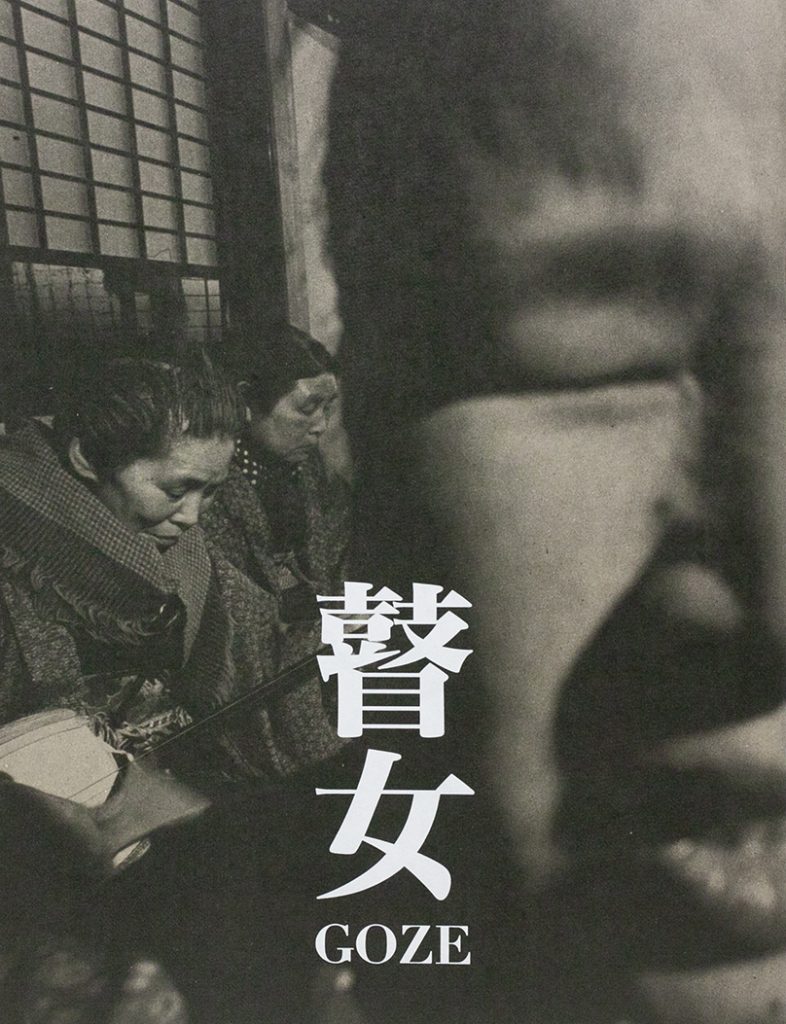
Shoko HASHIMOTO. Goze Asigraph Reprint
Half a century ago, Hashimoto Shoko photographed blind female musicians called the goze who toured and performed in the rural areas along the Sea of Japan. [Note: In Japanese, goze is pronounced as in “rosé”]. The goze would visit farmhouses and sing a short song accompanied by shamisen at the entrances in the day time. At night, they would sing songs in different lengths, including narrative songs for the villagers who would gather, and they were rewarded with rice and other crops and money.
When Hashimoto followed three elderly goze with his camera in the early 1970s through the seasons of spring, summer, autumn and winter, their existence was already nearly lost – the industrial and urban development in Japan at that time led to a decline in agriculture and rural population, directly impacting their livelihood.
This publication is a reprint of all the articles on the goze photographed by Hashimoto, which were originally published in Asahi Graph, a Japanese weekly pictorial magazine that continued from 1923 to 2000. Articles included are: “Goze, Sightless Female Singers” from May 8, 1970; “Four Seasons of Goze” series from October 26, November 2, November 9 and November 16, 1973.
This reprint includes English translations for all the articles and an additional essay written by Hasegawa Hiroshi.
“The journey must continue on cold and hot days, whether rain falls, the sun shines or winds are blowing hard. The basic form of travel is with a large cocoon cap on the head, face and neck covered with a towel, a kimono made of strong material with working pants, an apron, jika-tabi or rubber boots. Always in this same garb, the goze go from village to village in their endless single file.
These women follow such restrictions due to their journeys as itinerant blind performers, but the strictness of the constraints of unchanging clothing and their relentless procession makes their lives shine. There is surely no better icon to convey the vigour and rectitude of their lives. A steady gait that steps forward on the ground at all times makes you feel the strength of their will to live.”
-Excerpts from “The Goze’s Journey” by Hasegawa Hiroshi
My Take-As mentioned above, the Goze book is a reprint of all HASHIMOTO’s Asahi Graph articles which feature photographs of the blind female musicians. In a sense, it is less of a standard reprint than a compilation. Those familiar with the tradition of the Goze musicians makes this quite special in itself. The reprinting of the articles and images in their raw magazine form add an archival feel to the work, which makes it more of a historical relic than a straight-forward photography book. It feels somehow like an archival project, which extends the cause of the artist into something greater. The cover is quite alluring and oversize in form. It was one of the titles that I gravitated to early in the process of inquiring with Mark about possible titles to look at and review.
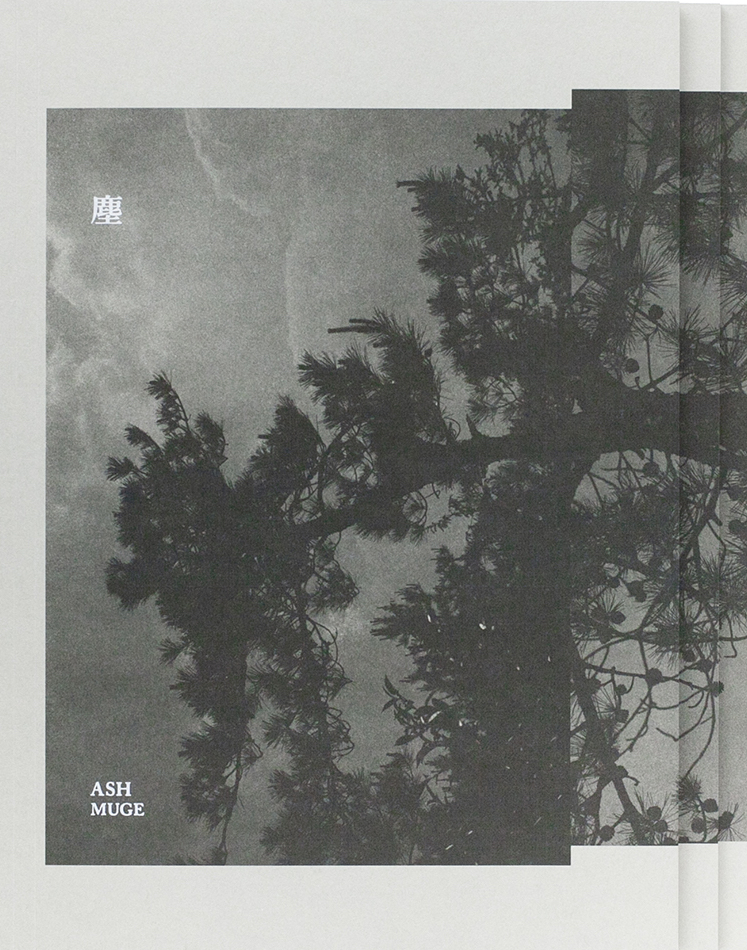
Ash. Muge. 2019
Based on Lao Tze’s “Theory of Nature,” Muge’s series approaches objects, sceneries and places from the perspective not of an intruder or observer but as an insider, as someone who belongs, giving his subjects the necessary space to weather, grow, decay, and simply exist. Divided into three parts (“Still Life,” Shan Shui,” and “Scenery”), Muge’s images draw on symbolism and metaphor to create larger connections between the pages of the book. The three parts of the book are stacked on top of each other, forming a staircase-like design, with each photo printed in black and gray and finished “with glossy varnish, matte varnish or special color varnish, depending on the delicate state of each object.”
When I used the large format camera to re-understand my hometown as it is now, I’ve discovered that all things in the real world derive from our internal desire: the Karma cycle of yearning for nature, destroying nature, and mending nature (…) These images are taken from the understandings gleaned from my daily life, conveying the traces of time and history in nature, and a person’s thoughts of the future when faced with reality. — Muge
My Take-This is a really beautifully produced book from the Chinese artist known as Muge. It is a title that I had managed to stumble upon somewhere on social media and had written a note to pursue at some point. I am not sure how to explain the physical product as it is cut in a special way that it has three raised steps or chapters cut into the fore-edge, which makes it an incredible object to hold. Inside, the focus on the natural world with strange perspectives shot from between rocks, hovering above waters, or nestled between gnarled tree limbs gives the sense of immediacy between artist and the natural world. The results in book form are attenuated by the physical nature of the fore-edge cuts and smart design and its odd physicality remind one of the material value of what lies within in the frames of Muge’s photographs.
White Noise. Takahiko Nakafuji. 2018.
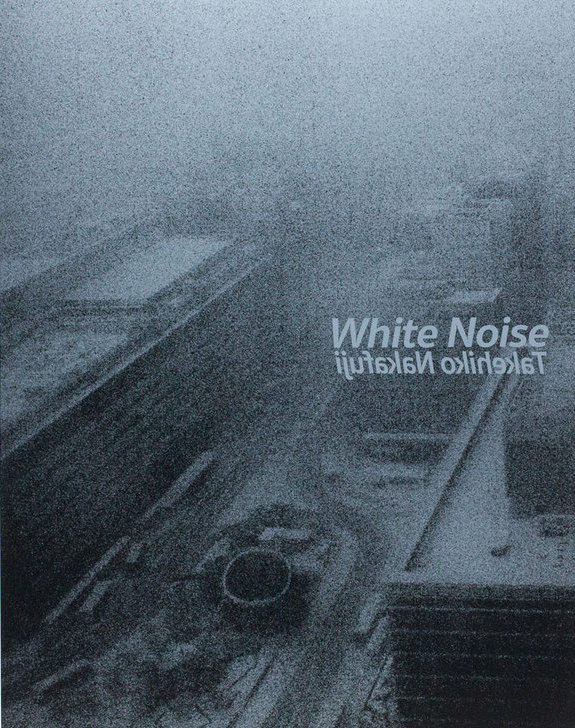
Takahiko Nakafuji. White Noise. 2018.
My Take-Takahiko’s Nakafuji’s White Noise has one of the most arresting and immediate covers that I have seen in some time. I was really taken with seeing this cover, like Muge’s Ash from afar. There is something pulsing, nocturnal, industrial and brooding about the cover that pulled me in quickly. What is more fascinating is that though it is an incredible and grainy photograph bathed in murk and consequence, the cover stands as something unique. The rest of the book that follows between the pages oscillates between the stark and grainy Japonisme that one becomes accustomed to historically, stark urban elements blended with tilted horizons and people passing in frame awkwardly to a pitched and saturated use of colourfully compressed and dynamic images of similar study, subject-wise.
The design with its many gatefold features creates a torrent of imagery. This particular element is something that I generally find difficult to work with. I am a conservative when it comes to design matters and tend not to want to get too involved in “playing” with books. In the case of White Noise, I make a slight exception as the images are quite hypnotic and I find myself reflecting on how the sequencing can be part of this playful experience, how the opening of the gatefolds turns the previous images in on themselves to reform and combine into new positions and possibilities. That cover though…
The Mechanical Retina on My Fingertips. Issei Suda. 2018
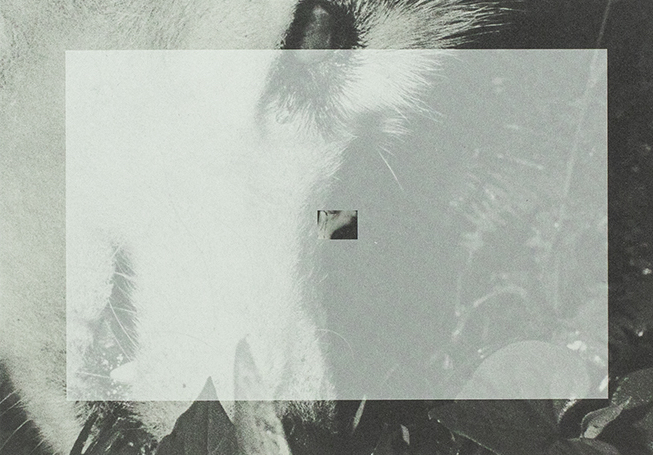
Issei Suda. The Mechanical Retina On My Fingertips.
“The Mechanical Retina on My Fingertips” is how Suda named his Minox Camera that held him in thrall from 1991 to 1992. The Minox camera is popularly known as a spy camera – It fits in the pocket with a shutter release as light as the blink of an eye. The resulting images developed from 8x11mm negatives are grainy and have a flat perspective. Suda comments that “no other camera ever accompanied my activities so closely.”
In addition to the Minox works which Suda published in his exhibitions during the 90s – “Trance”, “Keelung”, “Family Diary”, “Naked City”, “1987 Taipei City View” and “Before Night Falls”, this book includes more than 400 works selected from over 600 unpublished images which had long been stored in “A Box of Lingering”, as Suda called it.
My Take-I do not want to play favourites per se with the material that Mark was gracious enough to send me, but this was my introduction to Suda. It was sent to me just before I received a copy of 78 from Chose Commune and both books have confirmed my suspicions that Suda is one of the more underrated of the Japanese photography masters. I suspect that he was well-enough established in Japan itself to curry more reputation, but his advance is sadly lacking in the West until recently. Mark and I spoke a bit about Suda in the episode as well.
Where to begin…this is probably the book that has unlocked my interest in the Japanese photobook more so than any other title. It is simple and direct, small and opulent in its chaos. All of the images are shot with a Minox camera- a spy-type camera. This means they are resolute, but only if printed in a small size as the negative itself is slightly less than half of the standard 35mm negative. If expanded and printed larger than a drug store print at 5.5×3.5 inches, the image distorts, breaks and falls apart in its dissolve. This is of course what makes it attractive along with its relative invisibility in use.
Having see a couple of Suda books since, it is interesting to see the conflation of styles that his images can represent. If not styles, I could say interests. With the Minox images in The Mechanical Retina on My Fingertips, the images take on something closer to sinister. It is not just the distortion of the images, but what he found himself seeing when using the small camera. There are a particular series of screens and close ups of advertising that add a level of surrealism, but also something approaching a dark obsession in the work. Of course, this is offset by more mundane street images, but as the camera did not allow for formal compositions, nor was this the drive, you get a strange queasy feeling from some of the compression and use of tilted frames. In this, I find the success of the work. Looking at Suda’s work in a more formal arrangement, with a different use of cameras, medium-format and 35mm shows how the urge to let go when making images is stymied for a more practical consideration of form. You can see this in 78 in particular.
It is nice to see the balance between how an artists “crafts” his or her work between the obsessional value indebted to each format and consideration of viewership. With the Minox images, you get the sense that some of the work may or may not have been meant for public when it was created. I could be wrong on that, but one can see a freer and looser set of associations drummed up with Mechanical Retina. This would be my recommendation for
Koo Bohnchang. Clandestine Pursuit in the Long Afternoon. 2019.
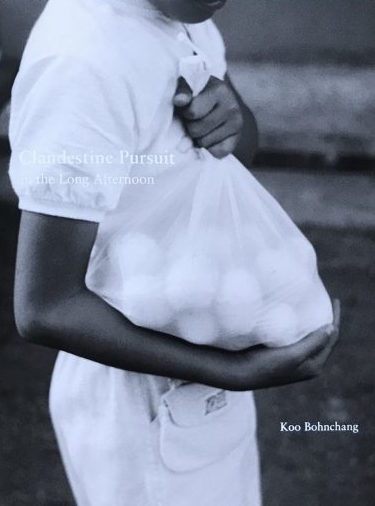
Koo Bohnchang. Clandestine Pursuit in the Long Afternoon. 2019
Koo Bohnchang currently lives and works in Seoul, Korea. He attended Yonsei University majoring in Business Administration and later obtained his doctoral degree in photography in Hamburg, Germany. He is currently the chair professor at Kyungil University, Department of Photography and Motion Picture.
Zen Foto Gallery is pleased to present the photobook publication of Koo’s black and white film street photography from 1985 to 1990, taken upon his return to Seoul from his studies in Germany. While the Summer Olympics was soon to be taken place in Seoul in 1988, Koo witnessed the political turmoil and social unrest that his country was going through. In order to express his feelings of alienation towards the chaotic and abrupt transformation in the Korean society, he decided to capture the fragments of turbulent times with his outsider’s gaze. After 30 years, “Clandestine Pursuit in the Long Afternoon” is finally compiled into a book.
The Year 1985
It had only been six years of studying abroad,
but Seoul seemed no longer familiar to me.
The endless flood of vehicles and people, the noise.
A vortex of images flitting across my retina.
Construction, patriotism, falsehood, and vanity.
From dawn until the last neon light switched off, This city was like the heavily breathing surface of a vast ocean.
I was in a strange city
to find something
unknown to myself.
I was wandering.
My Take-Koo’s book was another from the package that Mark sent over which gave me insight into another incredible artist whose career spans decades and whose work has evolved from the riotous chaos of youth to a more refined and elegant mediation on time, tradition and object-hood.
Clandestine Pursuit In the Long Afternoon is a book about familiarity, absence and change. The work is the result of Koo returning from his studies abroad in Germany in the mid-80s to his home in Seoul. The memories that he had with the city and community were at odds with the economic and cultural expansion that had aggressively gained ground while he was studying. Instead the prodigal return that he expected, he instead found a culture awash in consumer goods, economic expansion and the juggernaut of history defying his memories and expectations of his return. It was a disconnect from the familiar and it resonated deeply with Koo who used the camera to perhaps confirm what his eyes saw. From that point of belief, he made an excessively smart body of work that would result int his publication some 3o years later.
It has all the urban grit you could desire, but within the grit, you begin to see the poetry of a man whose heart is in a state of lament or morning. It is perhaps about being at a certain age when the conflation of angry youthfulness subsides into a more mediated challenge to qualities of surface readings and renderings. The blade of grass in the crack of the sidewalk, the flight of the birds nestled amongst the electrical wires and the inevitable march towards change in life that nobody can tell you about, but must be observed and simply experienced. Koo’s work has since changed with time and I can see the same concerns that he may have had a younger man, but I can see them in the peace that he has found in his work. They are the same idea, one is simply on a different plane than the other which exists in a state of frenetic and aspiring absolution.
